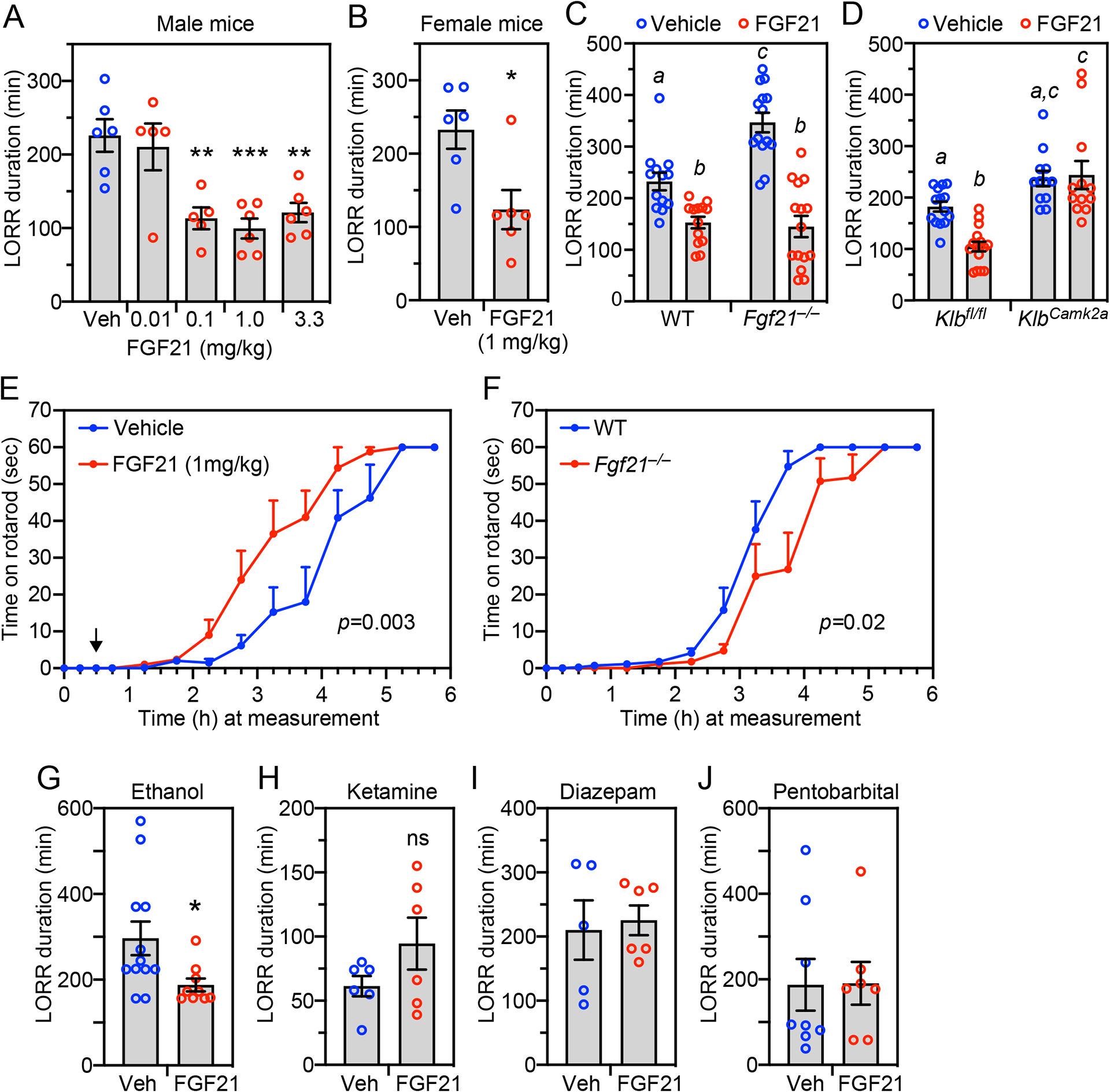Figure 3. Pharmacologic FGF21 accelerates recovery from alcohol-induced loss of righting reflex and ataxia and is selective for ethanol.

(A, B) Wild-type (WT) male (A) or female (B) mice were administered ethanol (5 g/kg, oral gavage) followed 1 hour later by i.p. injection of vehicle or FGF21 at the indicated doses. Loss of righting reflex (LORR) duration was measured after FGF21 or vehicle administration (n = 5–6 mice/group). Data represent the mean ± SEM. *, P < 0.05, **, P < 0.01, ***, P < 0.001 compared to vehicle by one-way ANOVA (A) or Student’s t-test (B).
(C, D) WT and Fgf21−/− mice (n = 13–15 mice/group) (C) or control (Klbfl/fl) and neuron-specific Klb−/− (KlbCamk2a) mice (n = 12–16 mice/group) (D) were administered ethanol (5 g/kg, oral gavage) followed 1 hour later by i.p. injection of FGF21 (1 mg/kg) or vehicle. LORR duration was measured after FGF21 or vehicle administration. Data represent the mean ± SEM. Different lowercase letters indicate statistical significance (P < 0.05 by two-way ANOVA).
(E) WT mice were administered ethanol (2 g/kg, i.p.) followed 30 minutes later by injection of FGF21 (1 mg/kg, i.p.; indicated by arrow) or vehicle. The time mice could remain on a spinning rotarod was measured, with 60 seconds the maximum (n = 8 mice/group). Data represent the mean ± SEM. P value by likelihood ratio test as described in Methods.
(F)WT and Fgf21−/− mice were administered ethanol (2 g/kg, i.p.) and the time they could remain on a spinning rotarod measured as in (E) (n = 8 mice/group). Data represent the mean ± SEM. P value by likelihood ratio test as described in Methods.
(G-J) Wild-type mice were administered ethanol (4.3 g/kg) (G) (n = 9–12 mice/group), ketamine (200 mg/kg) (H) (n = 6 mice/group), diazepam (30 mg/kg) (I) (n = 5–6 mice/group) or pentobarbital (55 mg/kg) (J) (n = 7–8 mice/group) by i.p. injection. After 30 minutes, mice were i.p. injected with either FGF21 (1 mg/kg) or vehicle. Loss of righting reflex (LORR) duration was measured after FGF21 or vehicle administration. Data represent the mean ± SEM. *, P < 0.05 compared to vehicle-treated mice by Student’s t-test.
